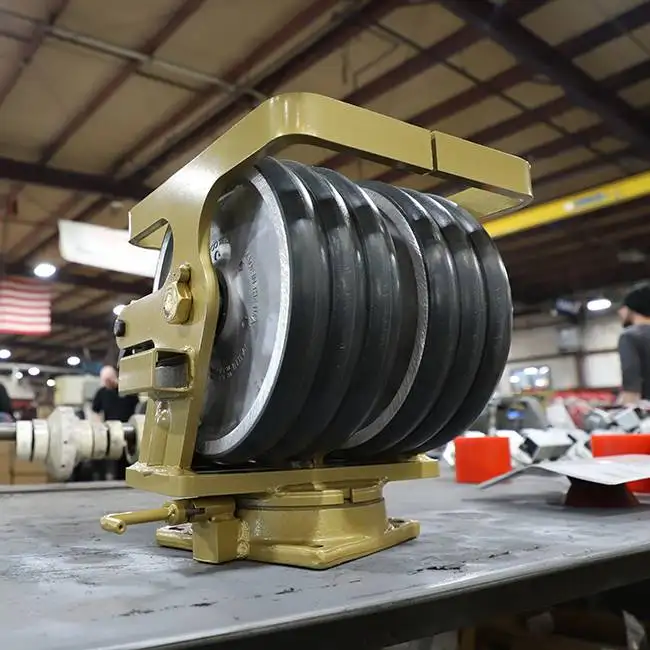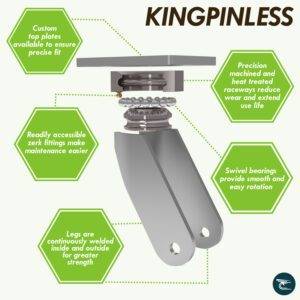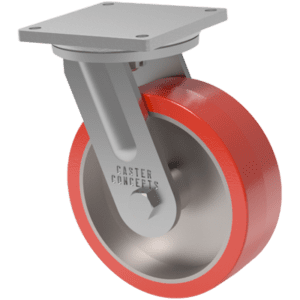

Getting the performance and longevity out of an industrial caster largely depends upon three key design choices. However, when determining the best heavy duty caster for your application, things will go a lot smoother by knowing some other information, such as how heavy the load is, the type of environment you will be rolling your cart on, and how much abuse your industrial cart and casters (such as a load being dropped on the cart) are going to experience.
Knowing this additional information regarding your application helps in pinpointing how we can help you determine the design of your caster based on the following three key design factors:
 Generally speaking, proper sizing of the swivel section refers to the ball-bearing interface between the top plate and the yoke base comprising the swivel section.
Generally speaking, proper sizing of the swivel section refers to the ball-bearing interface between the top plate and the yoke base comprising the swivel section.
The top plate connects the caster to the piece of equipment, and the wheel legs attach to the yoke base. The ball bearings between the top plate and the yoke base are arranged in a predetermined radius. The raceway circumference and the ball bearing size determine the carrying capacity of the swivel section.
If it is a maintenance-free swivel section, it will have a precision-sealed ball bearing pressed into a yoke base and the top plate to hold the two pieces together. This design allows for the most consistent and smooth spinning swivel section.
Once you’ve determined the appropriate size of the swivel section, you must consider leg size. Leg material thickness and leg width determine leg size. It’s important to size both leg thickness and width correctly in order to safely support loads while at rest and while moving.
∗ Legs are the axle-support brackets extending down from the fork base of a swivel caster, or from the mounting plate of a rigid caster∗
The leg impacts the caster application in three very important ways.

95 Series Caster constructed of hot forged C-1045 steel with a 7- inch diameter machined load raceway
The third key consideration also involves the swivel section. Swivel sections are manufactured either by cold-stamping or hot-forging. The cost, quality, and strength of your caster vary widely depending on the method used.
Cold forging improves the strength of the metal by hardening it at room temperature. Cold stamping is also inexpensive. However, it cannot be used for every metal because certain types are much more likely to crack or break during the process.
Hot forging results in optimal yield strength, low hardness, and high ductility by hardening the metal at extremely high temperatures.
For industrial casters, cold-stamping is generally limited to 0.25-inch steel plates. The more expensive hot forging uses much thicker plates in the range of 0.875 inches. Hot-forged steel produces the highest quality, strongest material for manufacturing heavy-duty industrial casters.
Clarifying these three critical points will springboard the application engineering portion of the caster design project in the right direction. An improperly sized and manufactured swivel section, with improperly sized legs, means eventual caster failure.
Our expert engineers at Caster Concepts are adept at designing the appropriate caster for your needs. If you’re struggling with these design choices and want to ensure you’re making the best decisions, please don’t hesitate to contact our highly experienced engineering team at Caster Concepts.